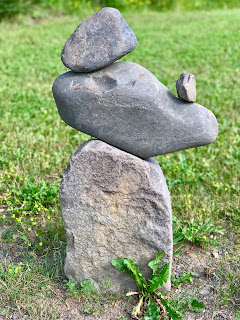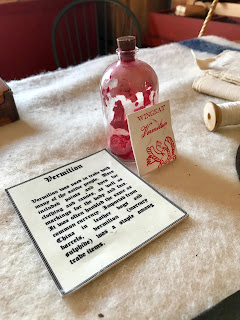2017.07.26-Ely, MN
We arrived Sunday, 2017.07.23. Travel days are usually rest days, once we get setup. We did find an interesting place for lunch that was known for it’s grilled cheese sandwiches. Jerry had the classic with fresh tomatoes and onions. I had a turkey club and it was delicious!
Welcome sign for Ely, MN
Tuesday,
2107.07.25, we found Kawishiwi Falls. Kawishiwi
is an Ojibwe name meaning the “river full of beaver or muskrat houses.” Once we parked the car, it wasn’t a long hike to the
falls, but the walk was infested with those pesky flying bugs! The bugs seem less if you could stay in the
sunlight, but the path doesn’t always do that.
<sigh> Onward…
Later that
afternoon, we visited the International Wolf Center. They have 5 wolves in an acre and a half enclosure. While we were there, someone rang a bell and
the 5 of them came out of their den to get some kibble. In a way it is sad. All the wolves there are neutered and/or spayed. Another male and a female were in another
enclosure for retirement.


Wednesday,
2017.07.26, was mainly a take care of business day. We received closing documents for the sale of
our property in Boerne. Four pages
needed to be notarized, so we went to the local Wells Fargo. They were fast and efficient. We came home, signed the other papers,
scanned and emailed the documents. However,
the closing company wants the originals, too.
Off we went to the Post Office.
Jerry mailed them on Wednesday as on overnight, but they won’t get there
until Friday. Welcome to a small remote town
in the Boundary Waters. When done with
the PO I tried to start the car. Yep,
the battery was dead. Is this the fun
part? Jerry called a local auto
shop. The guy was there in less than 10
minutes. Yep, small towns are great! He got us started, we followed him back to the
shop, we now have a new battery.
Wednesday at
5pm, Ely has a farmer’s market in the square.
One of the RV ladies wanted to go, so she and I start walking. I didn’t realize it was so FAR AWAY! We are staying on 21st, the market
was on 8th. She is younger
and in much better shape than I am. It seemed
she started running to the square, but I slowed her down. Too funny, but I really enjoyed it. I bought some fresh spring mix salad, homemade
breads (a cinnamon and an olive oil with rosemary), a bar of homemade soap
(Musky Rose) and 2 delightful wooden utensils (a spoon made from apple wood and a
spatula made from maple root).
Whew! That was enough! Time to head back to the coach. On the way back, I saw these lovely lilies. There are lots of these lovely flowers here.


Today, we
drove to the Soudan mine, which is the site of the oldest and deepest iron ore
mine in Minnesota. The mine quit operating
in 1962 and was then donated in 1965 to the state of Minnesota to be preserved
and operated as a state park. This is an
interesting park! We got there in plenty
of time for the 11am tour. However, they
said it was 50 degrees in the mine and the tour lasted an hour. Neither Jerry nor I had jackets in the
car. We decided to exchange our tickets
for a later tour so we could drive 25 miles back to get our jackets.
I’m somewhat
claustrophobic, so was concerned about riding the cage down for 2.5 minutes. But, I did it!
There were about 12 folks in our cage.
Fortunately, the tour guide was in our cage. There was one other lady there who was more
scared but he did an excellent job of trying to distract her. The trip down was noisy and rough and dark. The tour guide held his flashlight up so the ride down wasn’t completely dark. The walls of the
mine were maybe 10 inches away from my nose.
Once we got down there, we loaded into carts and away we went for about a
two minute ride. Then we climbed up a
narrow spiral staircase 22’ to where he started the lecture.
And, yes, he
did turn out all the lights, then lit a single candle to show how much light it
produced. In the beginning, the miners
only had candles, which they had to buy from the company store. Interesting tour!
This is where the iron ore would be loaded onto the train cars
This was a part of the hoist system. The wheel below was at the top of this tower.
This is the sign that greeted us as we exited the cage.

















































